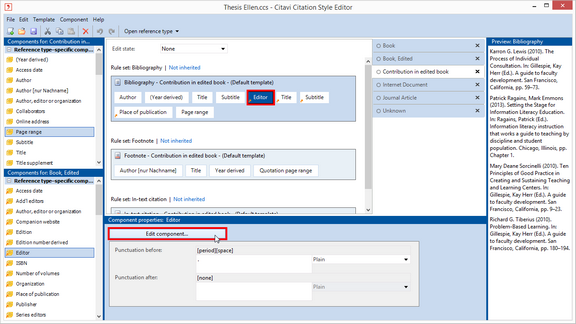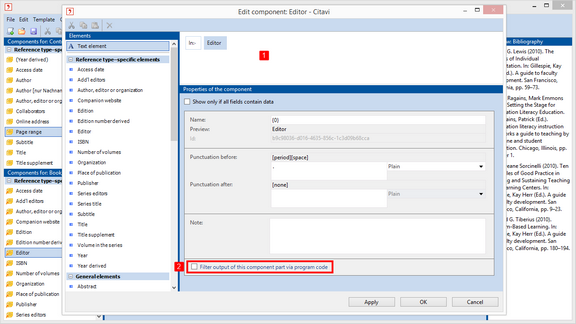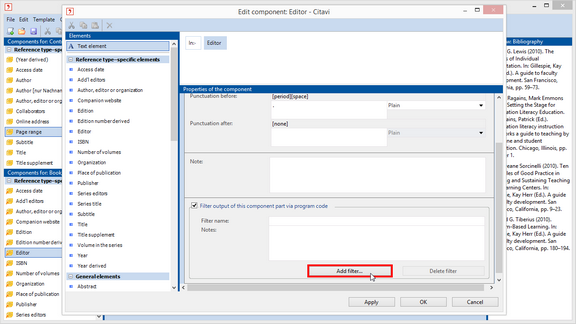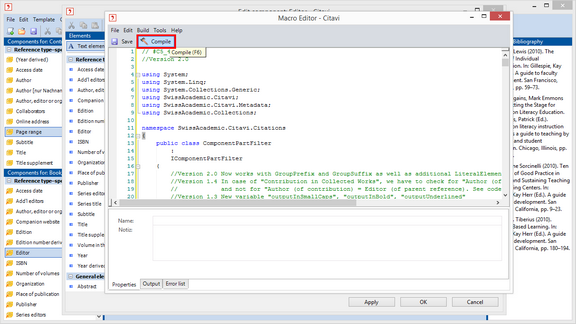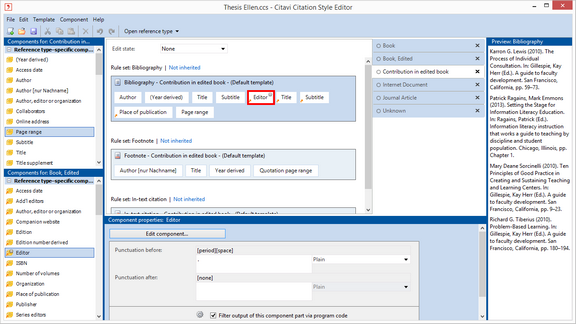Programmable Components
Some citation style requirements are so complex that they require multiple templates, as shown in the following example: Frawley, W.: Prolegomenon to a Theory of Translation. In: id. (ed.) Translation. Literary, Linguistic, and Philosophical Perspectives. Newark, Del. 1983, 159-175. Why is this problematic? Some styles distinguish between language and gender. If a contribution in an edited book is cited, the editor should not be written out, if the author of the contribution and the editor of the book as a whole are identical. Instead "id." should be used for a single man, "ead." should be used for a single woman, "eid." should be used for multiple male authors or a mixed group of male or female authors or "eaed." should be used for a group of female authors. For English-language references "(ed.)" should be used for the editor, while for German-language references (Hrsg.) should be used. When all of these rules are combined, 16 templates would be necessary to make the style work properly.
|
|
Enable the Filter output of this component part via program code checkbox ( ). |
|
|
|
Paste the code that you copied from the support portal. Click Compile. As long as no error messages occur, click Save. |
|
Programmed components are displayed with a gear symbol. |
